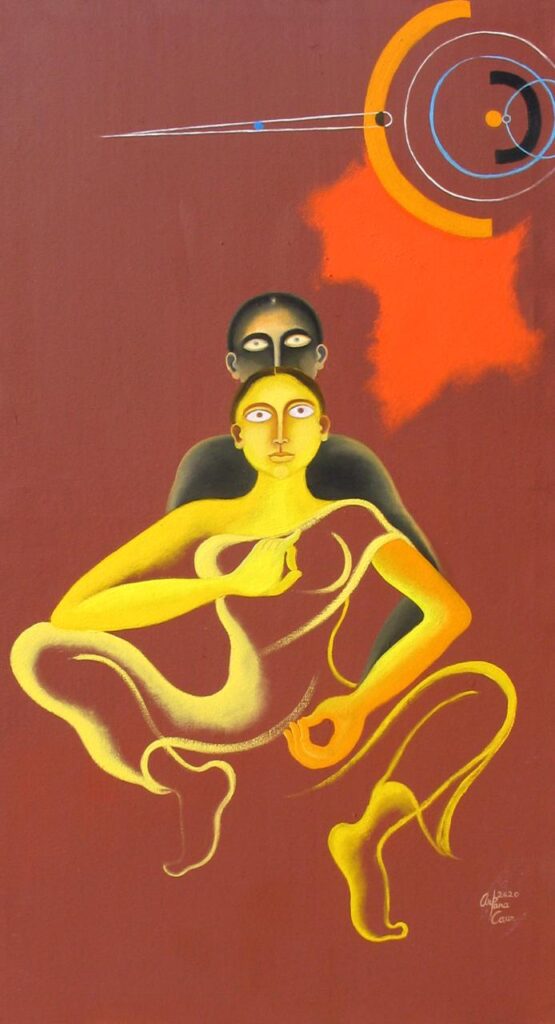Arpana Caur
(b.1954)
Arpana Caur has exhibited her works since 1974 in Delhi, Mumbai, Kolkata, Bangalore, Chennai, London, Glasgow, Berlin, Amsterdam, Singapore, Munich, New York. Her works are in many private and public collections in India and abroad including National Gallery of Modem Art, New Delhi; Victoria and Albert Museum, London; Bradford Museum, UK; Kunst Museum, Dusseldorf; Singapore Museum of Modem Art; Philadelphia Museum of Art; Peabody Essex, Boston and the Ethnographic Museum, Stockholm. She was recently part of ‘The Print: Matter in Matrix’, Gallery Latitude 28 at Sridharani Gallery, New Delhi (2020)’. In 1995, she attended the ‘Nature and Environment’ workshop jointly organized by the Lalit Kala Akademi, Max Mueller Bhavan and Japan Foundation. In the same year, Arpana executed the commission for doing a large painting for the Hiroshima Museum’s permanent collection, on the occasion of the 60th Anniversary of the Nuclear Holocaust. She was an Advisory Committee member for National Gallery of Modern Art, Lalit Kala
Akademi and Sahitya Kala Parishad in 2001. She has also received the Limca Book of Records’ People of the Year award (for India) in 2014, Lifetime Achievement Award at the Sikh Art and Film Foundation, New York in 2010, was nominated by the Lalit Kala Akademi as the Eminent Artis between 1990 and1992, Commendation Certificate at the Algiers Biennale, and gold medal at the Sixth Triennale, India in 1986 and the All India Fine Arts and Crafts Society Award in 1985. Punjabi literature influenced Caur’s artistic perspective, and writers such as Shiv Batalvi, Amrita Pritam, and Krishna Sobti were visitors to her home. The literature and philosophy of Punjab contributed to the strains of melancholy, mysticism and devotion that may be felt in her work, while the Pahari miniature tradition provided inspiration for Caur’s manipulation of pictorial space. Despite her diverse influences, however, Caur’s subjects remain firmly rooted in the quotidian world of the woman, showing women engaged in commonplace acts such as daydreaming or typing. The repeated motif of clothing in Caur’s work both confirms and subverts the traditional picture of women. The artist lives and works in Delhi.

